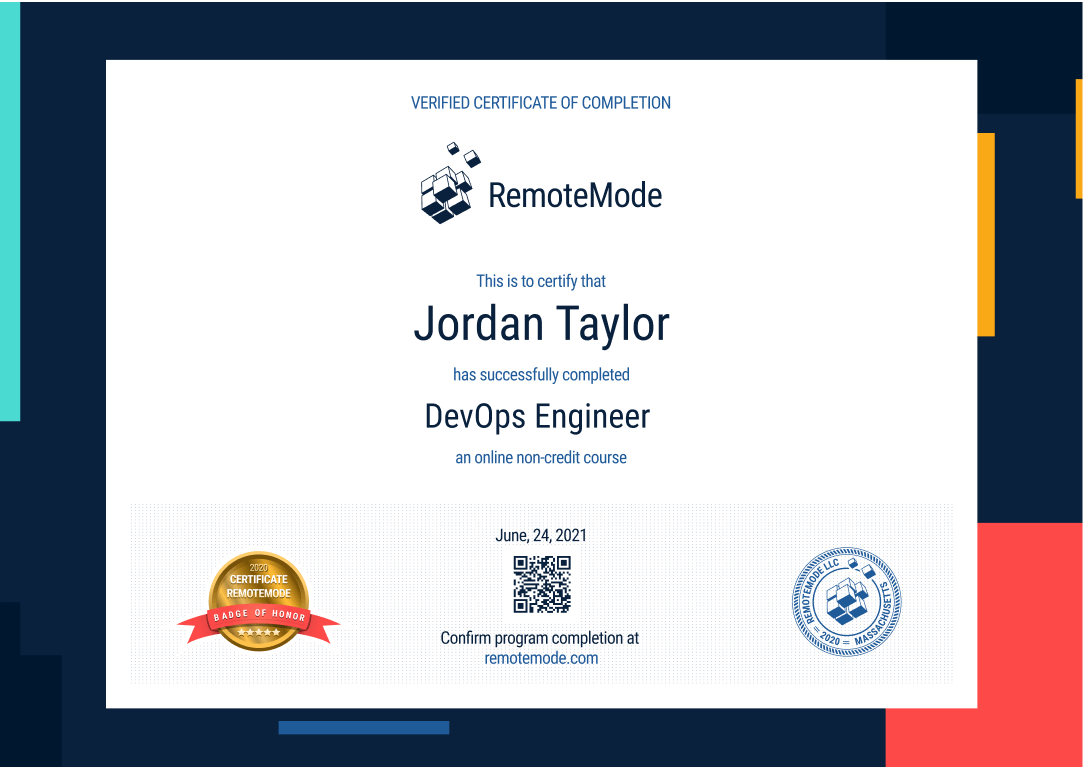Become a Linux Network Engineer
Set up and manage networks that are created using the Linux OS. Use high-end tools paired with cutting-edge teaching to get you up to date and working in the field as soon as possible. While Linux makes up a smaller market share, it is praised and used for its reliability by some of the biggest companies including Twitter, IBM, Google, and Amazon.
- 6-month long course
- 271 lessons
- 6 hours per week
- 156 hours of instruction



Mission Forecast for Linux Network Engineers
Landing Zone
Linux is a cheap, effective, and reliable service for servers and networks and is used by some of the biggest, most prestigious tech companies in the world. Linux gives developers an abundance of freedom to create and maintain their servers and has been used to found some of the most acclaimed start-ups in the world. Network administrators are ranked 8th in best technology jobs.
Mission Objective (Who’s Hiring Right Now)

Linux Network Engineer Overview
Network engineering jobs are some of the most stable and satisfying jobs in the market. Job growth is expected to be up to 5% in the next ten years.
- + 6-month long course
- + 6 hours per week, go at your own pace
- + 271 on-demand lessons
- + 156 hours of learning materials
- + Receive a certificate confirming your training
- + Participate in real-life Virtual Lab projects
- Build, configure and manage Linux operating systems.
- Work directly with software engineers.
- Implement the most effective tools into Linux.
- Resolve security issues and maintain a secure network.
- Work with developers to create and deploy products.
- Manage and upgrade Linux as needed.
Prepare for Liftoff
CompTIA A+ Certification
The CompTIA Network A+ Certification is an operational exam that is standardized and evaluates information technology skills. This certification, usually taken by people interested in pursuing a career in IT infrastructure, has lasting value because it provides an advantage in building in the industry and creating a career. Unlike other certifications which are domain-specific, this test assesses your knowledge and competence in supporting any network, regardless of the platform. More crucially, it provides exam takers who have the knowledge and skills they need to become technicians, thereby being the only IT credential with such broad application.
About this Course
This 13-part instructional covers a variety of operating systems topics. Students will learn about the nature, attributes, operations, and overall navigation of various operating systems during the duration of the lecture. It also goes through the essential elements in detail, with a step-by-step guide on correctly installing, setting, troubleshooting, and operating the OS. As a result, course participants will be ready for the exam and get the CompTIA A+ Certification.
Who is this course suitable for?
While these lessons are open to anybody interested in pursuing an IT-related job, the curriculum is tailored to individuals with laboratory or field experience. In addition, these lessons are open to the following professions while preparing for the CompTIA A+ exam.
- Desktop Support Administrator
- Technical Support Analyst
- Service Desk Analyst
- Data Support Technician
- Associate Network Engineer
- End-user Computing Technician
Skills to be developed and Course Prerequisites
This tutorial has no explicit prerequisites, although it does need students to have about 9-12 months of laboratory and field experience. Because the course is totally operational and highly technical, equivalent pieces of training are quite beneficial. Participants in this session must also demonstrate necessary skills, such as:
- The assemblage of computer hardware
- Configuration, installation, and upgrade of different operating systems
- Troubleshooting end-user access to applications and data
- Installation of virtual machines
- Implementation of cyber-security controls
Course Content
Fundamentals
The first section covers the operating system basics, including display, input, and external devices. Other pertinent subjects covered include command lines, control panels, and Windows security settings.
Best Practices
The following section goes through the software and hardware tools necessary to be an A+ technician. After that, participants will learn about best practices, electrical safety, professionalism, and control to succeed in the field.
PC Components
This topic focuses on software and hardware components, with classes provided to grasp technical aspects, including Selection Factors, CPU sockets, Cache, and Cooling systems.
Windows and Environments
This lecture covers virtualization and other related topics. Each installment, divided into six sections, focuses on one aspect of operating systems. Classes on the use of virtual memory, doing optimization, restoring deleted files, and customizing data editors are included in the discussion.
Working with Operating Systems
This section provides a comparative analysis of operating systems. MacOS and Windows, and Linux were thoroughly compared, requiring students to comprehend network connections and issues completely.
PC Hardware
Focusing solely on hardware, the following lecture expands on the broad components addressed in the fourth lesson (PC components). BIOS, motherboards, CPUs, power supplies are discussed in detail and recommendations on keeping them in top condition.
Networking Technologies
The notion of networks and other relevant factors such as media, cables, and connectors are the subject of this topic. The lesson includes an authoritative description of their application 2as well as information on cross-machine communication.
Computer Networking
This session will walk students through a series of wireless and wired networking tutorials. Cables, speed needs, emerging network technologies, and cellular networks are all investigated to better understand their characteristics and everyday usage.
Printers, SOHO, and Mobile
As it contextualizes Small Office Home Office, this section deviates slightly from the theme. First, essential concerns in SOHO construction will be listed, followed by a closer examination of other types of SOHO-related equipment, such as mobile devices and laptops.
Work using Mobile Devices
This part is a continuation of the previous topic, except that it concentrates on mobile devices. This module thoroughly discussed fundamental ideas such as smartphones, eReaders, tablets, and wearables.
Security
This section goes through the necessity of incident reporting, corporate security, and other safety-based measures in detail. In addition, correct password creation and other best practices are taught to increase the overall security outlook of the home network.
Network Security
This course, divided into three sub-lessons, looks at network circumstances, security, and hazardous factors, including viruses, Trojans, malware, and worms. It then diversifies to look at other vulnerabilities, as well as toolkits and countermeasures.
Troubleshooting
Like the CompTIA A+ exam, this part concludes the course by explaining correct troubleshooting strategies. Again, tips are offered to reduce network and home system downtime.

Mission Control
- Stay focused with a mentor’s help and support
- Build a real portfolio with Virtual Lab Projects
- Compete with classmates in a virtual classroom
- Measure your progress with the Activity Tracking Log
- Make sure you get the job with resume help and interview assistance
In Collaboration with
Chart Your Trajectory (271 videos 75 hours)
Certificate of Completion
- Receive a certificate recognized by prevalent companies confirming your training
- Complete real projects in Virtual Labs
- Go at your own pace, learn your way
- Access course videos and materials 24 hours a day
- Take practical quizzes to keep you up to speed
- Classes created and mentored by industry leaders

Grow into a Linux Network Engineer
Become an expert in Linux and learn how to properly operate networks running Linux. Linux is responsible for some of the most advanced tools in the industry and creates opportunities for industry leaders to create incredibly powerful networks.
Program Forecast
- 6 months long, 6 hours per week
- 271 lessons in 156 hours
- Learn at your own pace
Virtual Lab
- Real Projects
- Create a working portfolio
- Receive expert feedback and mentoring
Career Services
- Interview preparation
- Resumé assistance
- Help with LinkedIn networking
Request More Information
View pricing and financing options